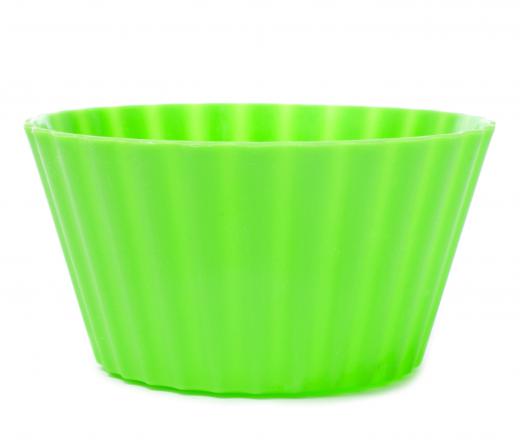As a product that has worked its way into our lives in many different ways, silicone is a substance that is composed of both organic and inorganic polymers, and is created by the application of a specific chemical formula. Often incorrectly referred to as "silicon," silicone is more correctly identified as polysiloxanes. The word itself is a derivative of ketone, based on the incorrect assumption that dimethylsilicon and dimethylketone would have similar chemical structures, since the formulas shared a number of characteristics.
Essentially, silicone is produced by the combination of an inorganic silicon and oxygen backbone with organic side groups that attach to the silicon atoms. The number of links or attachments between the organic and inorganic components is what determines the final consistency of the product. Various forms are usually categorized into two different groups, known as silicone oils and resins. With this family of materials, the end products may take on such diverse consistencies as hard plastic, rubber, gels, and liquids. There are many examples of silicone products that most of us have in our homes.

One example of how this material is used is as a sealant in building construction and maintenance. The sealants are used to take care of joints that are not quite flush, as well as crevices in older buildings where settling has occurred. Silicone sealants are produced in both professional and retail formulas, with silicone caulking compound being a common tool kept on hand by the home owner who prefers to take care of his or her space personally.

Another household use is as grease that is used in plumbing. Silicone grease acts as a lubricant that is often applied to O-rings that are used in kitchen and bathroom faucets, as well as with plumbing valves at junctions where the plumbing runs into the house from the main supply system. The grease helps prevent the rings from drying out and cracking, which would result in costly leaks in the equipment.

Silicone also makes an appearance when it comes to cooking. As a component that is often found in parchment paper, the silicone prevents foods that are baked or broiled on the paper from sticking, such as with cookies, slices of bacon, or chicken breasts. In addition, a number of the non-stick sprays used today have silicone as one of the ingredients, allowing the cook to not have to use oils or shortening to prevent sticking. This type of rubber also shows up in the kitchen in the form of spatulas, serving and stirring spoons, and even plastic cheese knives.

This material also has a number of uses outside the home, such as in breast implants, menstrual cups, enclosures for electrical equipment, and also fire stops used in the process of fire retardation. As time goes on, the number of ways this valuable compound can be used will no doubt continue to expand.









